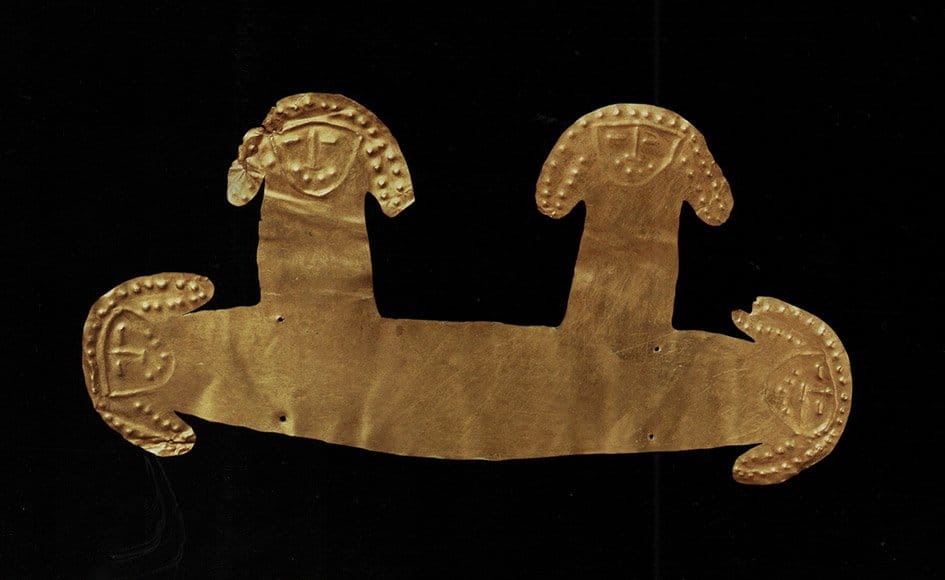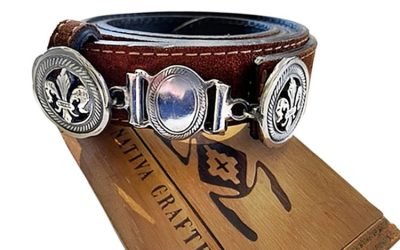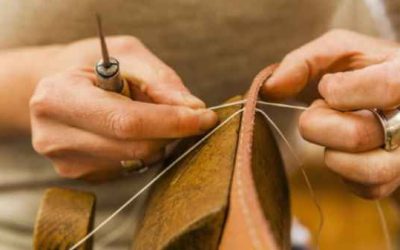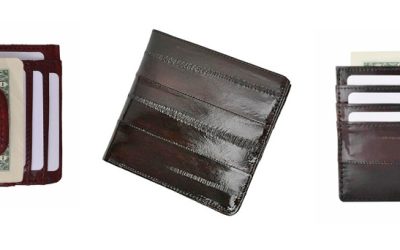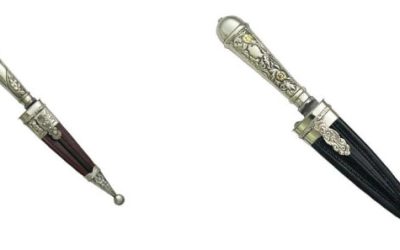Argentina, known for its diverse culture, vibrant landscapes, and passionate tango, has a rich and fascinating history when it comes to silver. The country’s name itself, derived from the Latin word “argentum” meaning silver, gives an indication of the importance of this precious metal in the region.
In this article, we will delve deep into the historical medley of silver in Argentina, exploring its origins, influence on society, and the role it played in shaping the nation.
PRE-COLUMBIAN ERA: THE INDIGENOUS TRIBES AND THEIR RELATIONSHIP WITH SILVER
Long before the arrival of Europeans, indigenous tribes in present-day Argentina had already discovered and utilized silver. The Diaguita and Calchaquí tribes, in particular, were skilled artisans who crafted intricate silver ornaments, tools, and ceremonial objects. The Incas, who expanded their empire into the region in the 15th century, also valued silver and appreciated the local tribes’ expertise. This early recognition of the metal’s worth set the stage for the silver fever that would follow.
THE SPANISH CONQUEST: SILVER AND THE BIRTH OF ARGENTINA

The Spanish conquest of South America in the 16th century was driven largely by the desire to exploit the continent’s vast natural resources, including silver. In 1536, Spanish explorer Juan Díaz de Solís embarked on a quest to find a passage to the Pacific Ocean and Asia, and in doing so, discovered the Río de la Plata, or “River of Silver.” Word quickly spread about the region’s silver riches, fueling the Spanish Crown’s interest in establishing a permanent presence.
Colonial settlements, such as Buenos Aires and Asunción, were established as key trading ports for transporting silver and other resources back to Spain. The mining of silver in the region was powered by forced indigenous labor, with catastrophic consequences for native populations. Silver extracted from the Potosí mines (in present-day Bolivia) was transported to Buenos Aires via the Camino Real, further strengthening the city’s strategic importance.
THE 19TH CENTURY: INDEPENDENCE AND THE IMPACT OF SILVER ON NATIONAL IDENTITY
Argentina’s struggle for independence from Spain in the early 19th century was, in part, a response to the exploitation of the nation’s resources, including silver. After achieving independence in 1816, silver continued to play a vital role in the country’s economy and development. The Peso Moneda Nacional, Argentina’s first official currency, was minted in silver in 1881, symbolizing the metal’s significance.
Moreover, the country’s rich silver-mining tradition inspired the Argentine coat of arms, which features two crossed silver maces, as well as the flag’s sky-blue and white colors – said to represent clouds and the silver found in the region.
THE 20TH CENTURY: SILVER MINING DECLINE AND REVIVAL
The 20th century saw a decline in Argentina’s silver production, as other industries, such as agriculture and oil, took precedence. However, the late 20th and early 21st centuries saw a resurgence in silver mining, driven by technological advancements and rising global demand. Today, Argentina ranks among the top silver producers in the world, with significant reserves and active mining projects.
SILVER IN ARGENTINE ART AND CULTURE
Silver has left an indelible mark on Argentine culture and art, with silversmithing being a revered craft. The tradition of crafting silver has been passed down through generations, resulting in stunning works of art and intricate jewelry. The gaucho culture, a symbol of Argentine national identity, is also closely linked to silver, as traditional gaucho attire features intricate silver embellishments on belts, knives, and saddle accessories.
Argentine artists have also drawn inspiration from the country’s silver legacy. One notable example is the renowned Argentine painter and sculptor Antonio Berni, who incorporated silver into his artwork to explore themes of national identity and social commentary.
THE FUTURE OF SILVER IN ARGENTINA
As global demand for silver remains strong, Argentina’s silver mining industry is poised for continued growth. The country’s untapped silver reserves and advances in mining technology present significant opportunities for future exploration and production.
Environmental concerns, however, have led to increased scrutiny of mining practices and a push for sustainable methods. Argentina’s government and mining companies will need to strike a balance between economic growth and environmental stewardship to ensure the long-term viability of the nation’s silver industry.
APPLICATIONS OF ARGENTINA’S SILVER IN DIFFERENT INDUSTRIES

Some of the common uses include:
Solar Energy: Silver is a vital component in photovoltaic (PV) solar panels due to its excellent electrical conductivity. It is used to create the thin conductive paste applied to PV cells, allowing for efficient energy conversion from sunlight to electricity.
Electronics: Silver’s high conductivity and anti-corrosion properties make it an ideal material for use in electrical contacts, switches, and circuit boards. Its widespread use in electronic devices, such as smartphones, computers, and televisions, highlights its critical role in modern technology.
Medicine: Silver’s antibacterial properties have made it a valuable material for use in medical applications. Silver nanoparticles are used in wound dressings, surgical instruments, and medical device coatings to reduce the risk of infection. Additionally, silver is used in dental fillings and prosthetics due to its durability and biocompatibility.
Water Purification: Silver’s ability to kill bacteria and other microorganisms makes it an effective water purification agent. It is used in water filters, swimming pools, and water treatment systems to ensure clean, safe drinking water and reduce the spread of waterborne diseases.
Photography: While the rise of digital photography has reduced the demand for silver in this application, silver-based compounds were once essential for traditional photographic film development. Silver halide crystals in the film would react with light, capturing images in black and white or color.
Automotive Industry: Silver is used in a variety of automotive applications, including electrical systems, connectors, and sensors. With the growth of electric vehicles, silver’s role in the automotive industry is expected to expand due to its use in batteries and other electronic components.
Jewelry and Silverware: Silver has been used for centuries to create elegant and timeless jewelry, such as rings, necklaces, bracelets, and earrings. Sterling silver, an alloy containing 92.5% silver, is commonly used for its durability and tarnish resistance. Silver is also widely used in silverware, including cutlery, trays, and decorative items.
Investment and Currency: Silver has long been considered a valuable commodity for investment purposes. It is used as a hedge against inflation and currency devaluation. Silver coins, bars, and bullion are popular among investors, while governments have historically used silver to mint currency, such as coins and banknotes.
Space and Satellite Technology: Silver’s exceptional conductive properties, resistance to corrosion, and ability to withstand extreme temperatures make it an indispensable material in the aerospace industry. Silver is used in satellite components, such as electrical contacts, connectors, and thermal control coatings, ensuring reliable performance in the harsh environment of outer space.
HOW IS ARGENTINA’S SILVER DIFFERENT?
Some of the key features include:
Exceptional Electrical Conductivity: Silver is the most electrically conductive metal, making it indispensable for various electronic applications and energy generation technologies, such as solar panels.
Thermal Conductivity: Silver possesses the highest thermal conductivity among all metals, allowing it to efficiently transfer heat. This property is crucial in applications like aerospace components, where temperature regulation is essential.
Reflectivity: Silver has the highest reflectivity of any metal, enabling it to reflect light efficiently. This feature has been utilized in traditional photography, mirrors, and solar reflectors for concentrated solar power systems.
Antibacterial Properties: Silver is a powerful antimicrobial agent capable of killing bacteria and other microorganisms, making it valuable in medical and water purification applications.
Tarnish Resistance: When alloyed with other metals, such as copper, silver becomes more resistant to tarnishing and corrosion, increasing its durability for use in jewelry, silverware, and other decorative items.
Malleability and Ductility: Silver’s malleability and ductility allow it to be formed into intricate shapes and designs. These properties have made it a popular choice for artisans and craftsmen throughout history.
Rarity: Silver is relatively rare compared to other metals, such as copper or iron, contributing to its value as a commodity for investment and currency purposes.
Cultural Significance: Silver has a rich historical and cultural significance in Argentina, evident in its influence on national identity, art, and the nation’s name itself.
Environmental Sustainability: Silver is highly recyclable, with nearly all silver used in industrial applications eventually being recovered and reused. This reduces the environmental impact of mining and contributes to a more sustainable future for the metal.
FINAL THOUGHTS
Silver, a metal with a rich historical and cultural significance in Argentina, boasts an array of unique properties that have made it indispensable across various industries and applications. From its exceptional electrical and thermal conductivity to its antimicrobial properties, silver has proven its versatility and value. Its malleability and ductility have led to a long tradition of craftsmanship, particularly in the creation of intricate jewelry and decorative items. Furthermore, silver’s rarity and recyclability make it an attractive option for investments and sustainable practices.
Argentina’s silver history has shaped its national identity, inspired its artists, and fostered a thriving tourism sector. The country has also been a significant contributor to the global silver market, with its mining industry continuing to grow in response to worldwide demand. As the nation looks to the future, striking a balance between economic growth and environmental stewardship will be crucial to ensuring the long-term viability of its silver industry.
In conclusion, silver’s unique features and rich historical medley have made it an invaluable element in various applications, ranging from electronics to medicine. As Argentina continues to harness its silver resources, the nation is poised to remain an influential player in the global silver market. The fascinating story of silver in Argentina showcases the enduring legacy of this precious metal and its ongoing importance in modern society.
The Perfect Pair: Leather and Sterling Silver Accessories in Argentine Style
Argentina is a land of rich traditions, where craftsmanship and culture intertwine to create...
5 Unique Leather Accessories Styling Tips for Your Everyday Life
Leather accessories have long been a staple in the world of fashion, prized for their timeless...
The History of the Cuff Bracelet: From Ancient Origins to Modern Elegance
The cuff bracelet is much more than just a fashionable accessory; it is a timeless piece...
Understanding Leather Grades: Why Argentine Leather Tops the List
Leather has been a cornerstone of human craftsmanship for centuries, valued for its durability,...
How to Put on an Open Cuff Bracelet: A Step-by-Step Guide
Open cuff bracelets are elegant and versatile accessories, but knowing the proper way to put one...
The Art of Soguería Criolla: A Cultural Tradition
Soguería criolla, or traditional Argentine leather braiding, is a centuries-old craft deeply...
From Tarnished to Stunning: Easily Clean Your 925 Silver Jewelry: STERLING SILVER CLEANING CLOTH
Keeping your 925 silver jewelry shining and free of tarnish is simple with a special silver...
Discover the Craftsmanship of Argentine Leather Bags for Men
Argentina has long been recognized for its rich heritage in leather craftsmanship, producing some...
Discover the Elegance of Men’s Eel Skin Wallets
When it comes to men’s accessories, few items strike the perfect balance between sophistication...
The Mastery of Picasso Knives: Hand-Chiseled Perfection
In the realm of fine cutlery, few names evoke the same sense of craftsmanship and artistry as...

